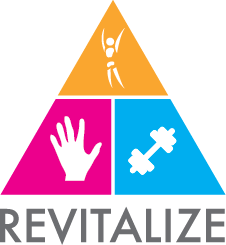Well what a mixture of topics! But there’s a reason. We actually put to a vote on the Revitalize Facebook Page, what topics would you like us to cover in our next blog and these two came out on top. So here it goes, an easily digestible chunk sized blog on Carb Cycling and Sacroiliac Joint Rehab
Carb Cycling
Your body is constantly monitoring and adapting to the intensity (activity level) you’re putting it through on a second to second basis to create the most advantageous response for survival. I.e. if you’re working really hard and need a lot of energy, glucose will be sent to your muscles. This is because 400,000 years ago, if it didn’t, you’d fatigue and get eaten. If you are inactive and did the same thing, the body would lose all it’s energy to your muscles which are highly metabolic and wouldn’t store any in your liver, so you’d die of starvation. Carb cycling is manipulating this process for fitness goals.
In short, you need to be consuming high carb meals on the days that you’re weight training and low carb meals on the days of cardiovascular exercise.
Weight training is incredibly intense and therefore acquires a plentiful supply of carbohydrates (glucose) for energy. By consuming 20-25 grams of carbohydrates before and during weight training you can stabilise blood sugar levels and reduce stress hormone secretion. This means you can train harder and maintain anabolic (muscle building) processes.
By consuming high carbohydrate meals (say 60-75% of your daily allowance of carbohydrates) straight after your daily training session, you’re saying to your body 2 things
- I have enough energy to build more muscle (so therefore no stress hormones, please)
- I want you to put this energy back into my muscles (so therefore secrete lots of insulin to do so)
So to summarise your high carb days are when you’re weight truing that day (quantity of carbohydrates is dependant on your weight, activity levels and body type which we can calculate for you at the clinic)
Your low carb days are focused around your cardio days, once again focusing on consuming most carbohydrates after your training session. Under 100g of carbohydrates days is a great number to stick to, simultaneously increasing the amount of calories you’re getting from healthy fat (once again we can calculate this number at the clinic). By doing this you’re saying to your body
- I have a limited amount of quick releasing energy (i.e. glucose) so therefore please burn more fat (i.e. happy waist line)
- I have just trained and therefore need most of my energy to go to my muscles (once again happy waist line)
And that in short is carb cycling. High and low days dependant on your exercise intensity. You can also alter calorific intake via work-out drinks to control and therefore manipulate your weight efficiently.
And onto Sacroiliac Joint Rehabilitation
The sacroiliac joint connects your pelvis to your spine. No muscles directly act over it however the gluteal muscles and tensor fascia lata add great support.
The sacroiliac joint, when injured, is extremely painful. It most commonly results in pain in the groin and the back of the hip which can radiate as far down as the foot, mimicking sciatica. Often caused by heavy impact and pregnancy, it can effect walking, more intense exercise and can ultimately be a very debilitating injury.
Rehabbing this area without pain relief can be tricky and therefore it’s advised that you visit your local Osteopath for treatment and bespoke rehabilitation, especially before you attempt to commit yourself to any rehabilitation advise, but as following are the basics.
The main painful ranges of motion when you’ve injured your sacroiliac joint are extension (taking the foot back) and flexion (taking your knee to your chest). We need to gradually increase range of motion to begin with, after which we can slowly challenge function. Below are links to exercises that increase in intensity throughout the consecutive phases and can be practiced daily.
PHASE 1
Isometric Hip Flexion
Isometric Hip Extension
Isometric Hip Abduction
PHASE 2
Glute Bridges
Single Leg Raises
Lateral Walks
PHASE 3
Lunge
Squat
Straight Leg Deadlift with very light weight an controlled form
PHASE 4
Single leg squat
Single leg deadlift
By gradually challenging movement throughout the pelvis, the nervous system begins to “trust” the ability of the injured area and therefore lowers the pain level. As well as this, inflammation is dispersed throughout the area rather than pooling once again lowering the pain level. Swimming, as a non weight bearing exercise can also be an effective way to improve sacroiliac joint function.
This blog post was written as a very basic guide. This is in no-way replacing a visit to your local osteopath, as without proper diagnosis and movement cues you may either be mis-diagnosisng your own injury OR challenging an injury prematurely. Make sure you only move onto the next phase of exercise when you can do the new exercises with little more than a 3/10 level of pain
We hope you enjoyed this rather mixed blog post. Let us know what you think as we’re always interested to know what you think
Written by Elliott Reid, Osteopath and Personal Trainer at The Revitalize Health and Fitness Clinic, Gravesend. Follow Elliott on Twitter






